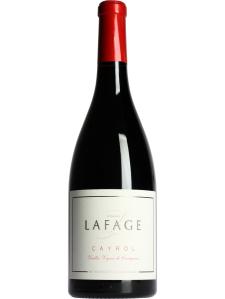-
中文名:
-
英文名:IGP Cotes Catalanes
-
位置:
-
葡萄园面积:公顷
-
葡萄酒特点:
-
产区产量:
-
土壤:
Côtes Catalanes is one of the most important IGPs in the Languedoc-Roussillon region of southern France, covering the same area as the Pyrénées-Orientales administrative department. A wide range of grape varieties are permitted.
Most wines claiming the Côtes Catalanes IGP can also claim the department name Pyrenées-Orientales. The exception is those few wines that are made in the Banyuls and Collioure zone, but do not qualify for the relevant AOP. These can be classified as IGP Côte Vermeille.
The department extends much further east and inland than any of Roussillon's AOP zones, as far as the border with Andorra. However, vineyards are mostly in the west of the zone, nearer the sea, in the eastern foothills of the Pyrenees. This is where the Côtes du Roussillon, Banyuls and Collioure appellations can be found.
The IGP exists mainly to provide a geographic indication for wines that are made outside the existing AOP vinification requirements or permitted styles. But many more wines are made and sold under the AOC-level Côtes du Roussillon and Côtes du Roussillon Villages appellations.
The IGP covers a wide range of terroir that can be broadly described as Mediterranean, with garrigue-covered hills and a hot, dry climate. The poor, dry soils are well suited to viticulture, forcing vine roots to travel deep into the soil to find water. Low rainfall leads to a concentration of flavors in the grapes.
Most of the vineyards lie on east-facing slopes that are open to marine influences. Sea breezes help to refresh vineyards during the hot, sunny days, and winds from the snow-covered caps of the Pyrenees cool vineyards at night, ensuring grapes develop acidity along with flavor.
The classic Mediterranean varieties – Grenache, Mourvèdre, Cinsaut and Carignan – dominate the wines made under the denomination, and as such enjoy the best vineyard sites. International varieties like Merlot and Cabernet Sauvignon are planted in the lower-lying areas where more-fertile soils are not as conducive to vine quality.
热门推荐
-

Domaine Lafage Cayrol Carignan Vieilles Vignes, IGP Cotes Catalanes, France
-

Domaine Lafage Cayrol Carignan Vieilles Vignes, IGP Cotes Catalanes, France
-

Domaine Lafage Cayrol Carignan Vieilles Vignes, IGP Cotes Catalanes, France
-

Domaine Lafage Cayrol Carignan Vieilles Vignes, IGP Cotes Catalanes, France

